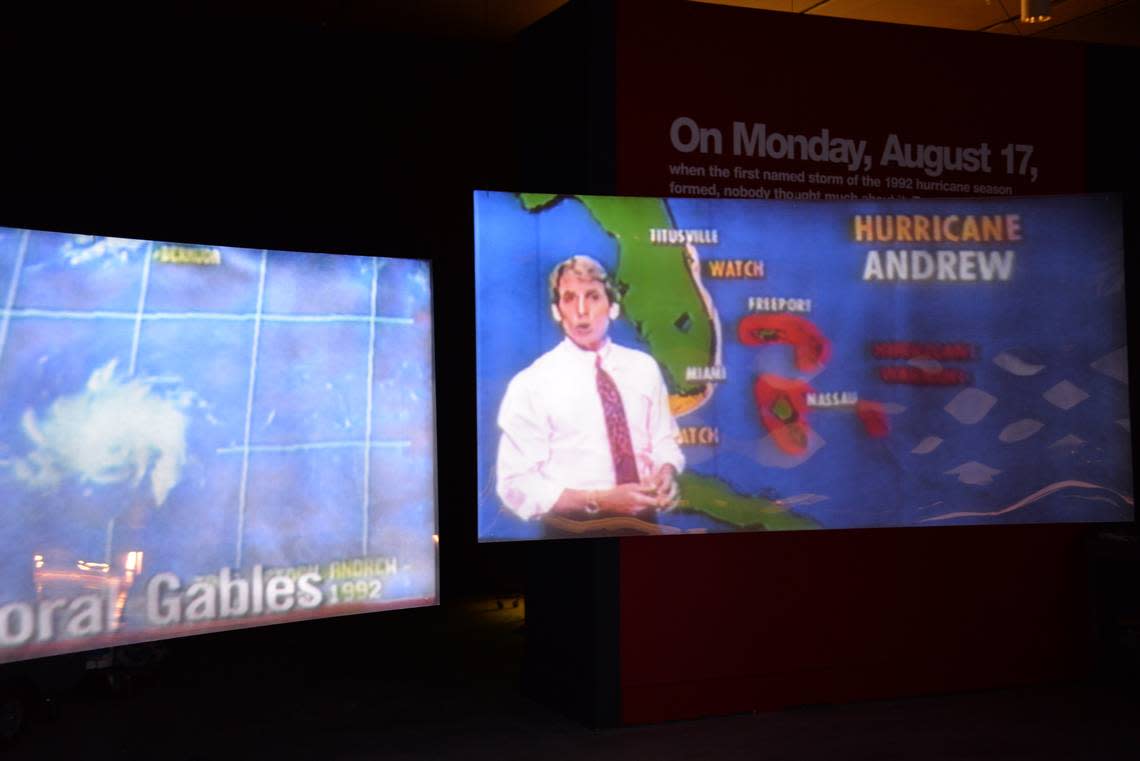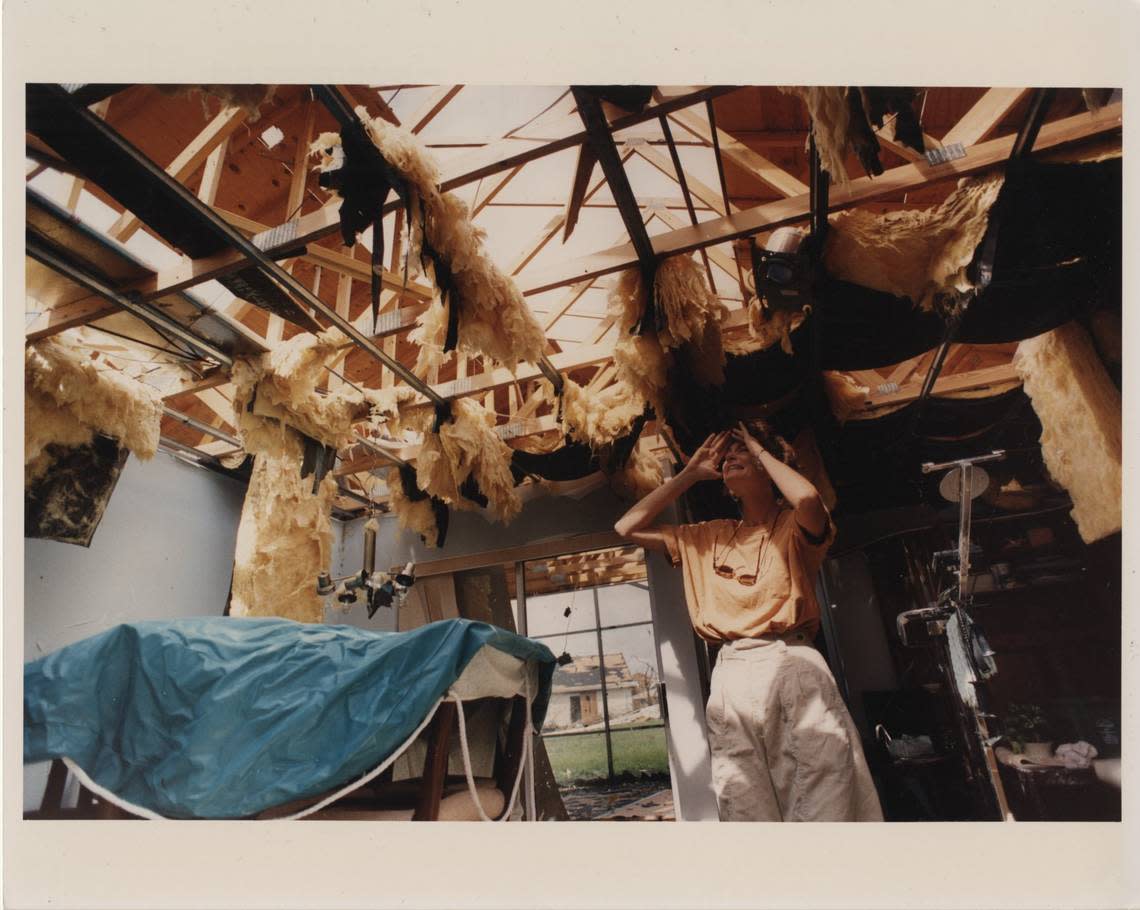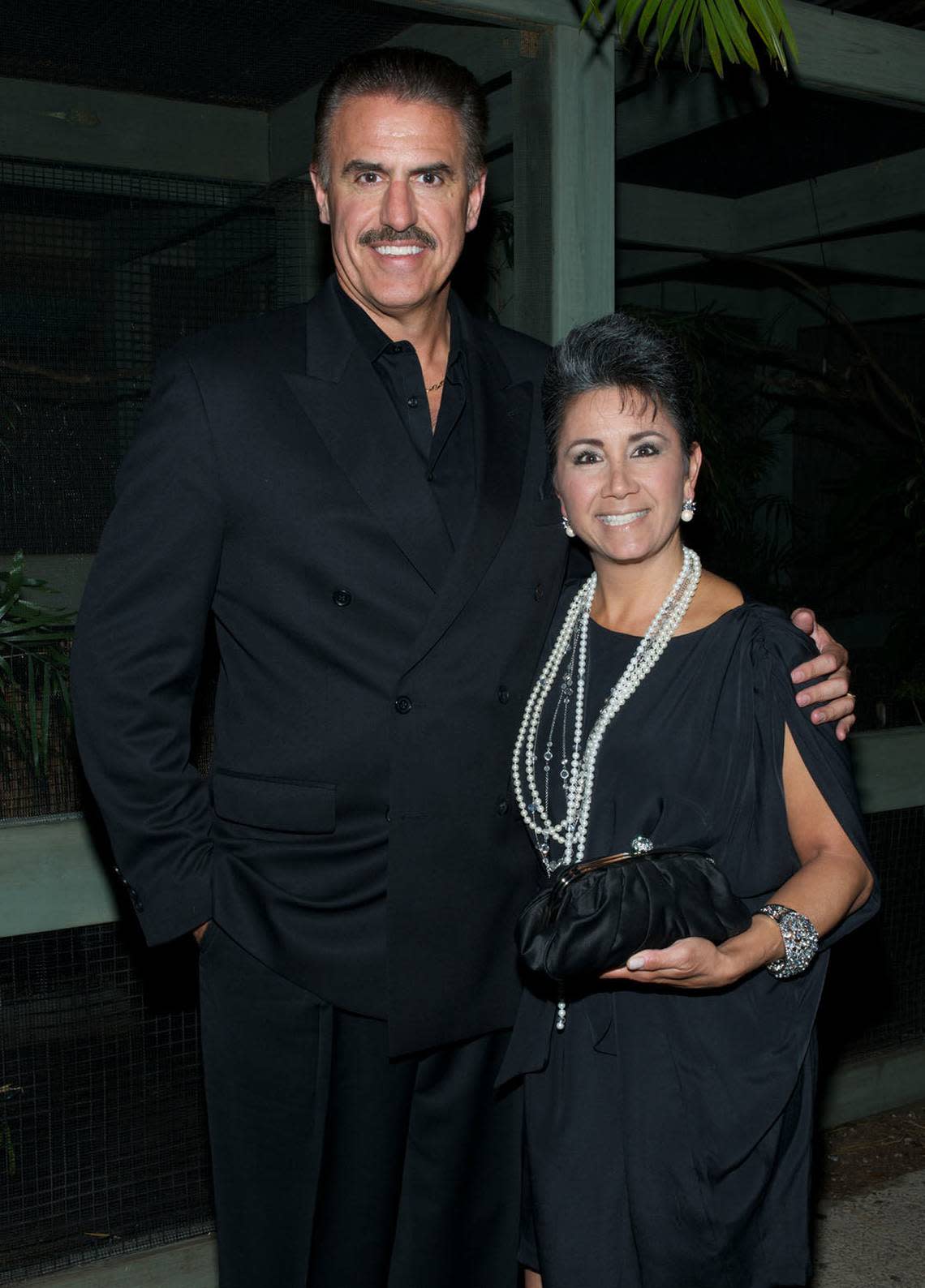What does hurricane hero Bryan Norcross think of Andrew? ‘Whole different event’
Bryan Norcross was South Florida’s “voice” of Hurricane Andrew 30 years ago. He kept us calm in the storm and told us what was coming and what to do.
Norcross is still watching hurricanes, now as a specialist with Fox Weather. He recently reflected on “that giant tornado hurricane” as Hurricane Andrew’s anniversary approached.
For Norcross, also the “face” of Hurricane Andrew storm coverage for those who had power or battery-operated TVs in a pre-iPad world, Andrew provided so many learning opportunities for the forecaster and the meteorologists who followed in storm prediction and preparation.
Andrew turned Norcross from an everyday TV forecaster who had gotten his start covering storms when Hurricane Camille hit the Gulf Coast in 1969, to a broadcasting hero who saved lives during Andrew’s Category 5 fury.
Norcross guided scared listeners to safer quarters in their homes with just the sound of his voice on the WTVJ airwaves.

A voice in the dark
HURRICANE ANDREW TIMELINE: 30 years ago this morning, the headline from the @NHC_Atlantic was "FIRST TROPICAL STORM OF THE SEASON FORMS..." Andrew was named with 40 mph winds in a slightly hostile environment. It was less than 7 days from landfall. More at https://t.co/X6Rmymh8c0 pic.twitter.com/SbtCAzIOXA
— Bryan Norcross (@bryannorcrosstv) August 17, 2022
Terrified listeners in Homestead, Florida City, Cutler Ridge and parts of Kendall, who had working portable radios and phones, called into the station to tell Norcross that their ceilings were squishing down upon them like overripe tomatoes. “What do we do?”
Norcross, who would write a book about the terrifying experience, “My Hurricane Andrew Story,” in 2019, knew what to tell them.
HURRICANE ANDREW TIMELINE: 30 years ago today, the system was sputtering. Winds were 50 mph but pulsing. The discussion said it might weaken to a depression. We weren't paying much attention in South Florida. It was less than 6 days from landfall. More at https://t.co/X6Rmymh8c0 pic.twitter.com/yddfyIs0lc
— Bryan Norcross (@bryannorcrosstv) August 18, 2022
“Things happened in Andrew that haven’t happened since,” said Norcross, 71, citing the Category 5’s tornadic activity when it touched down in South Miami-Dade on Aug. 24, 1992. Andrew, he said, flipped cars over inside garages and its 175 mph winds flung two-by-fours into palm trees.
“It’s a very rare storm that was that extreme,” he said. “We haven’t really had that giant tornado hurricane, which Andrew really was. It really was the first hurricane of the modern era. It was the hurricane that established how we deal with hurricanes.”
But in 1992, people in Norcross’ profession still had a lot to learn.
“From a media standpoint it was a different world, different level of technology, different in every possible way,” he said.
On Saturday, August 16, 1969, I "covered" my first hurricane. Actually, I just read the advisory issued by the New Orleans Weather Bureau on the radio. On that Saturday, Camille was forecast to go to the FL panhandle. https://t.co/WybO7ns3lL https://t.co/K0OUtv7z7F
— Bryan Norcross (@bnorcross) August 17, 2022
Getting ready for The Big One

Two seasons before Andrew in January 1990, Norcross tapped his background in engineering and TV production when he arrived at WTVJ as chief meteorologist. He had worked at other stations, including CNN’s launch in 1980 and at Miami’s WPLG in 1983, where he did weather reports from neighborhoods.
“We sat around talking about what we’re going to do to elevate the weather department to make it more prominent,” Norcross said of his early days at WTVJ, which, until September 1995, broadcast on Channel 4 and is now on Channel 6.
“I wasn’t the best-known meteorologist on TV,” he said. “I suggested we focus on hurricanes. Really, no one was talking about hurricanes but I had studied Miami history and I knew hurricanes were a big and consequential part of that history. It’s got to happen again. Someday.”
Andrew in ‘92, Norcross said, “really was the first big storm of the modern media era where the broadcast stayed on the air. That set some expectations that kind of ring true today.”
Norcross’ 23-hour marathon broadcast during Andrew provided thousands of South Floridians with a knowledgeable link to the outside world.
The Miami Herald’s former television critic, Hal Boedeker, wrote in his storm coverage review on Aug. 25, 1992:
“WTVJ-Channel 4’s Bryan Norcross distinguished himself as local television’s most valuable player during coverage of Hurricane Andrew. Norcross’ performance was a tour de force on many levels. His vast knowledge of weather and South Florida was an indispensable resource. When the National Hurricane Center lost its radar, Channel 4 and Norcross stepped in and alerted hurricane chief Bob Sheets to the storm’s progress. Norcross’ stamina was remarkable. ... The plain-speaking meteorologist upbraided people who refused to evacuate or otherwise downplayed the storm’s severity. He acknowledged that he wanted to scare people about Andrew, but he did so in a calm manner.”
How one couple turned to Norcross

Ron Magill, Zoo Miami’s communications director, was one of those people who needed to hear what Norcross was broadcasting. Professionally, he had animals to protect at the then-named Miami Metrozoo in Kendall. Personally, he had reasons, too.
Magill’s wife, Rita, was eight months pregnant with their first child as Hurricane Andrew roared over their Kendall home.
Their transistor radio, and Norcross’ voice, as the couple huddled on a bed with a flashlight in their boarded-up home that lost electricity, “was our only connection to any communication,” Magill, 62, told the Miami Herald in an email interview.
“We listened as Bryan described what to expect and which areas were going to feel the strongest impacts. We were in one of those areas and as the storm pounded our home, I could hear the shingles being peeled off the roof while unknown flying objects slammed against the walls creating loud thuds,” Magill said.
“All of a sudden, I heard a bang and glass breaking in an adjacent bedroom. As that happened, our ears popped as if we were changing altitude. I ran over to the bedroom and saw that the plywood had been ripped off by the wind and the window shattered, compromising the house,” Magill said.
“Shortly afterwards, the plywood over the sliding doors to our bedroom was also blown away. Remembering what Bryan had recommended, I immediately took our mattress and put it against the sliding doors to create a barrier and then moved a massive armoire up against it to keep it in place. I tried to keep my wife, who is from California, calm by saying that I had been through previous hurricanes and that this was normal and nothing to worry about. I was obviously lying!” Magill said.
Norcross’ expertise proved invaluable. When the wind suddenly abated, Magill’s concerns amplified. What if this lull was just the eye?
“I didn’t think that the house would be able to withstand another round of those winds. That is when Bryan said that the entire storm had passed! The eye had not gone over our home. We were in the north eyewall which is why we were pounded so intensely without a break. Hearing Bryan say that the worst was over brought me some of the greatest relief I have ever felt in my life,” Magill said.
“The bottom line was being able to hear Bryan constantly speaking to us and informing us of what to expect and how to react,” Magill said. Norcross “provided an invaluable sense of connection and security as his calming narrative helped to reassure us that we would get through this catastrophic event.”
Three decades later, Norcross visited Magill at Zoo Miami to ask him to participate in a 30th anniversary special, “The Wrath of Hurricane Andrew: Tragedy and Triumph,” which the forecaster hosts on Fox Weather at 10 p.m. Aug. 24.
“It was quite special to share those old memories with each other as we both wondered where the time had gone,” Magill said.
Reconnecting with @bryannorcrosstv as we approach the 30th anniversary of Hurricane Andrew. It was a pleasure to be interviewed by Bryan for an upcoming special he is doing for the Fox Weather Channel on this unforgettable storm. I can’t believe it’s been 30 years! pic.twitter.com/HYTYGq01Ra
— Ron Magill (@RonMagill) June 8, 2022
After Andrew
Norcross moved on from WTVJ at the end of 1995. Over the decades since, Norcross worked for WFOR, joined The Weather Channel in 2010 and returned to Miami on WPLG as its hurricane specialist in February 2018 — a homecoming. Norcross, a Florida State University graduate, began his local Miami weather career at the ABC affiliate in 1983.
In March, after four years with WPLG, Norcross started his new role at Fox Weather.
“One of the things I try to do today is not get in the weeds about the meteorology when the storm is threatening,” he said. “I talk a lot more about the effects and where I’m most concerned and what’s going to happen next. When it becomes a threat, I believe in changing the tone of my broadcast
“Andrew was this whole different category of event,” Norcross said. “The idea is that if you prepare for Andrew, you’re prepared for everything — except a flood.”

